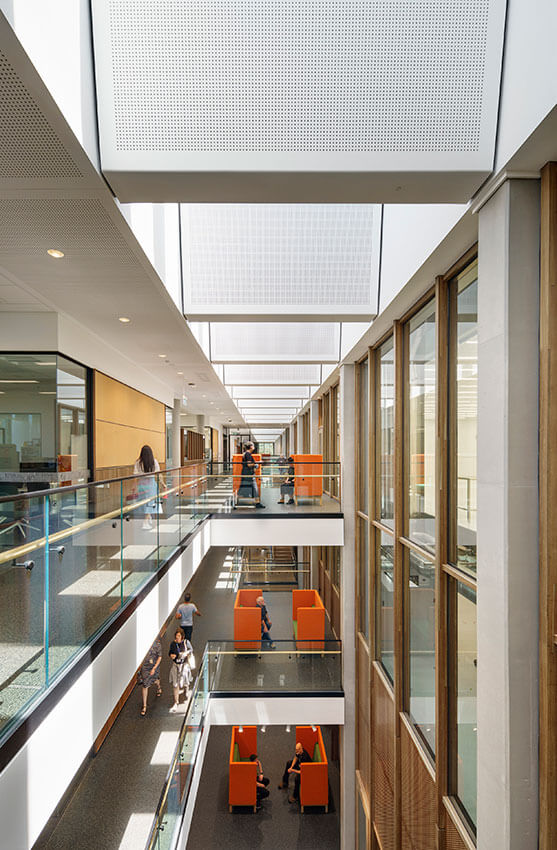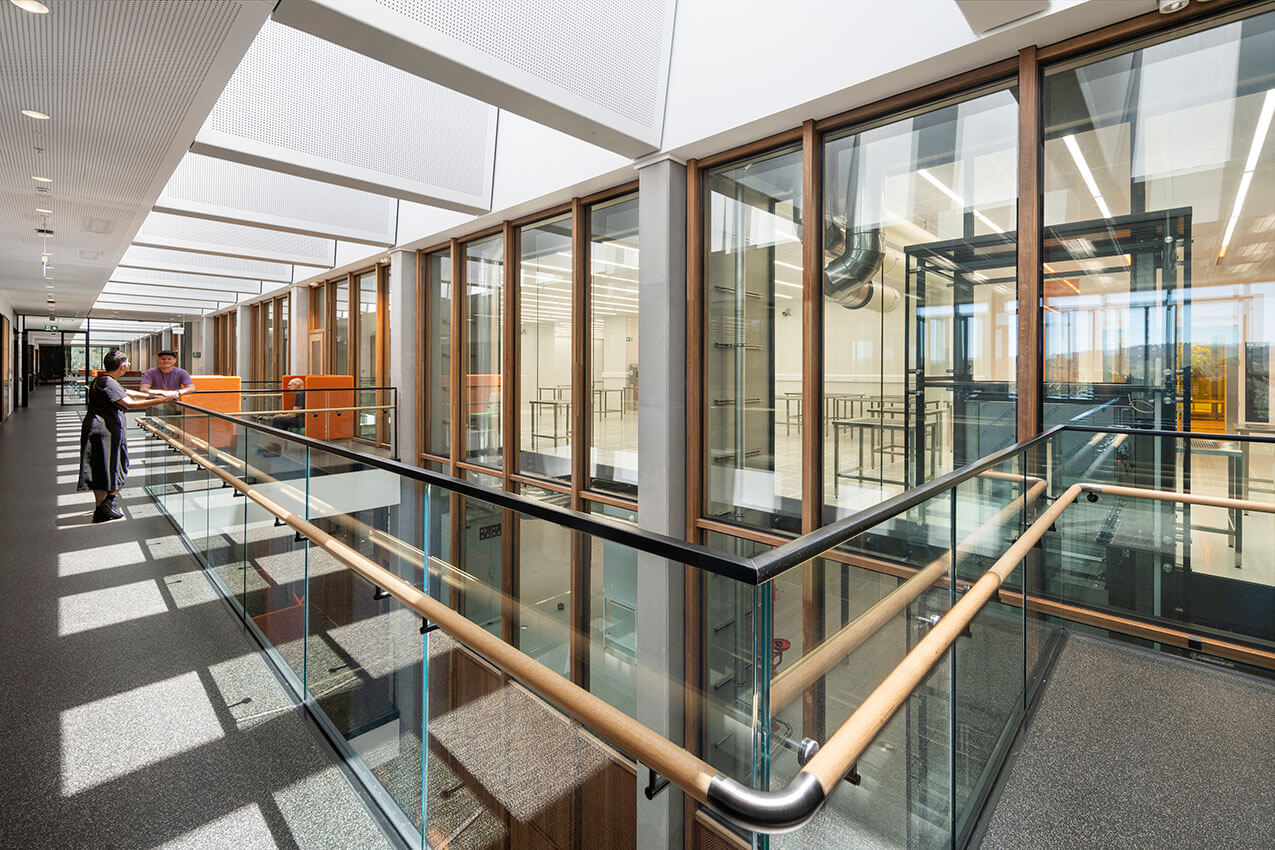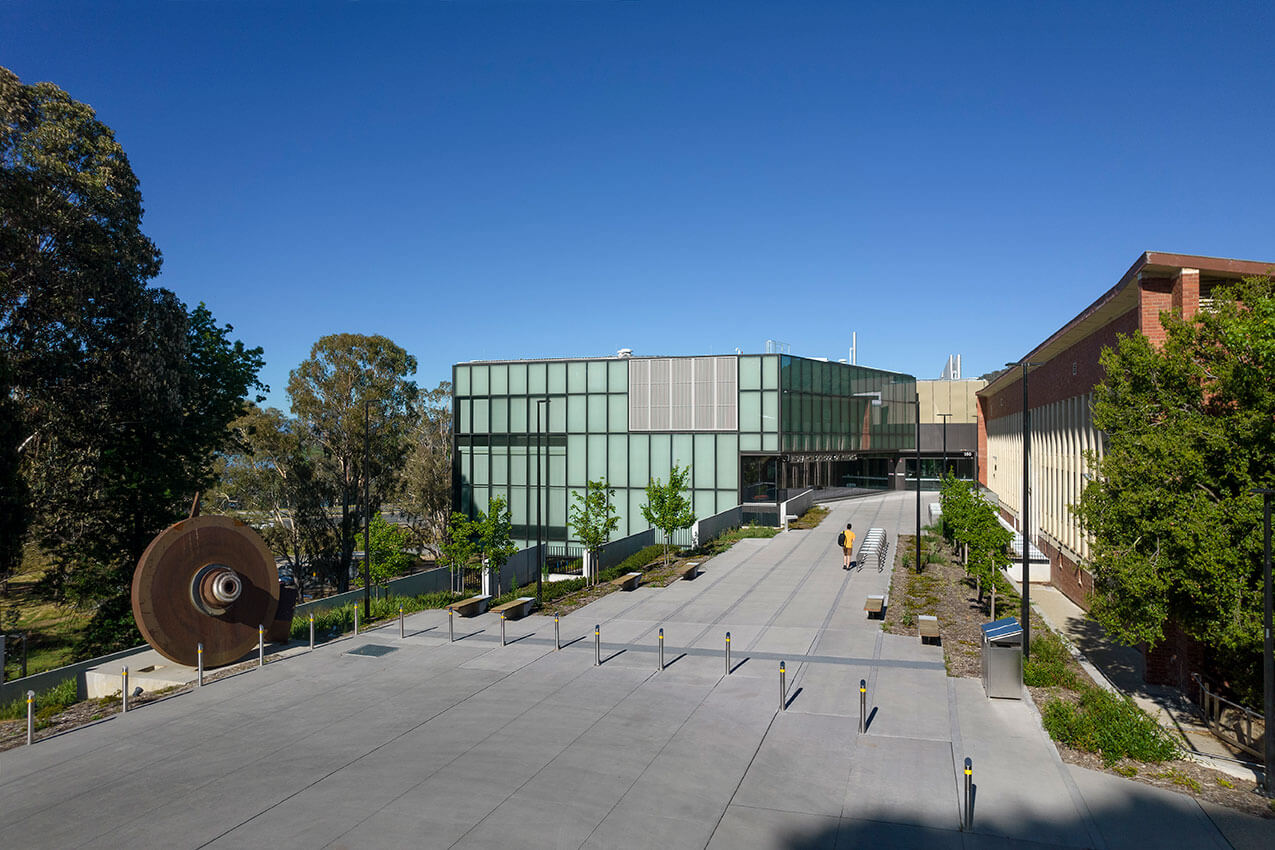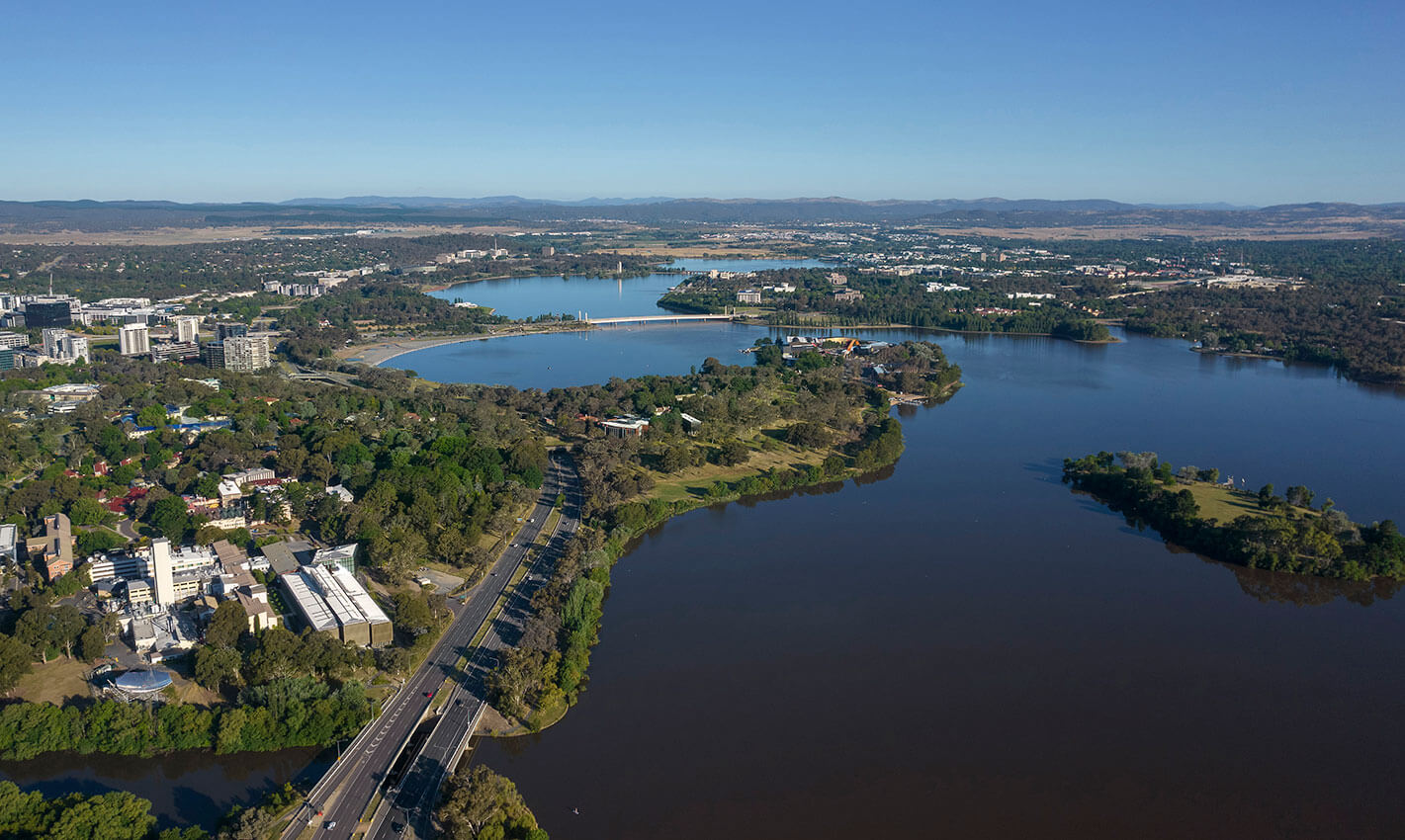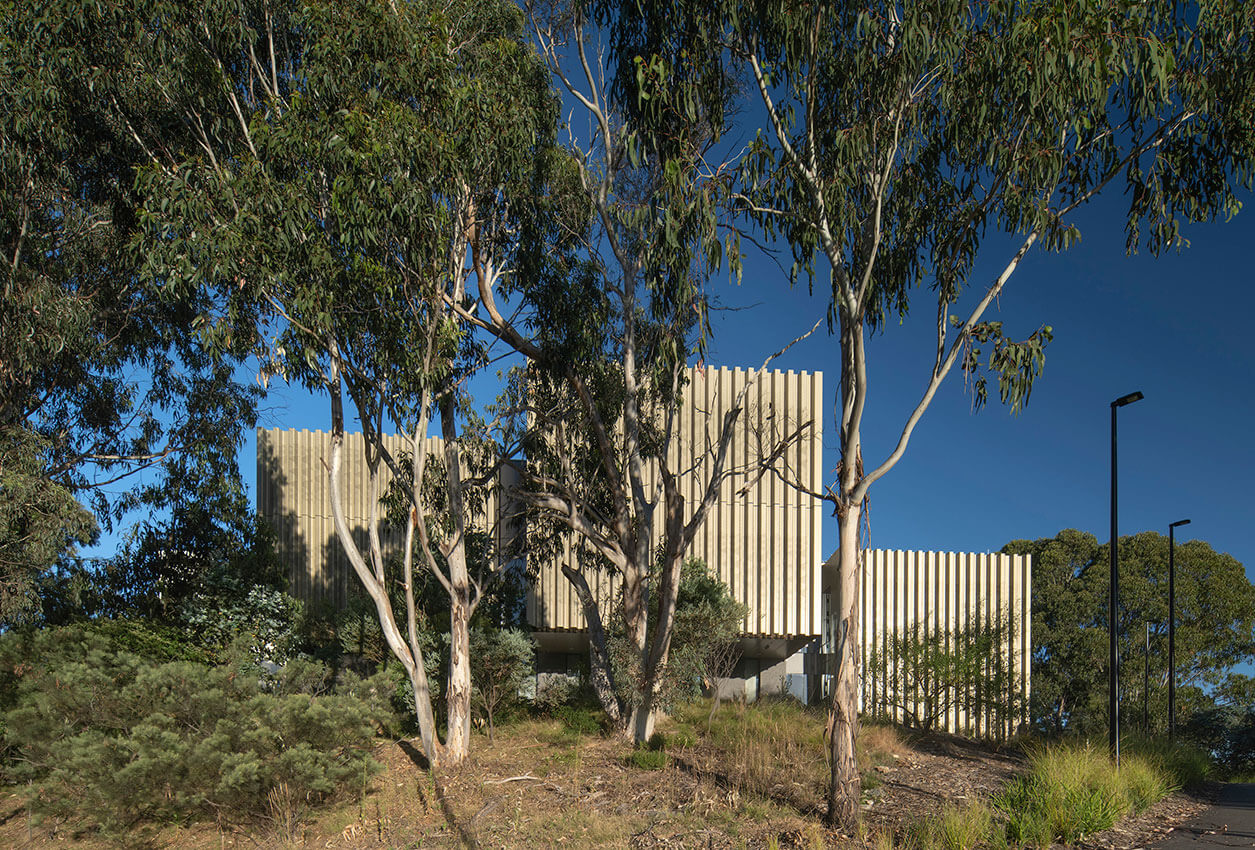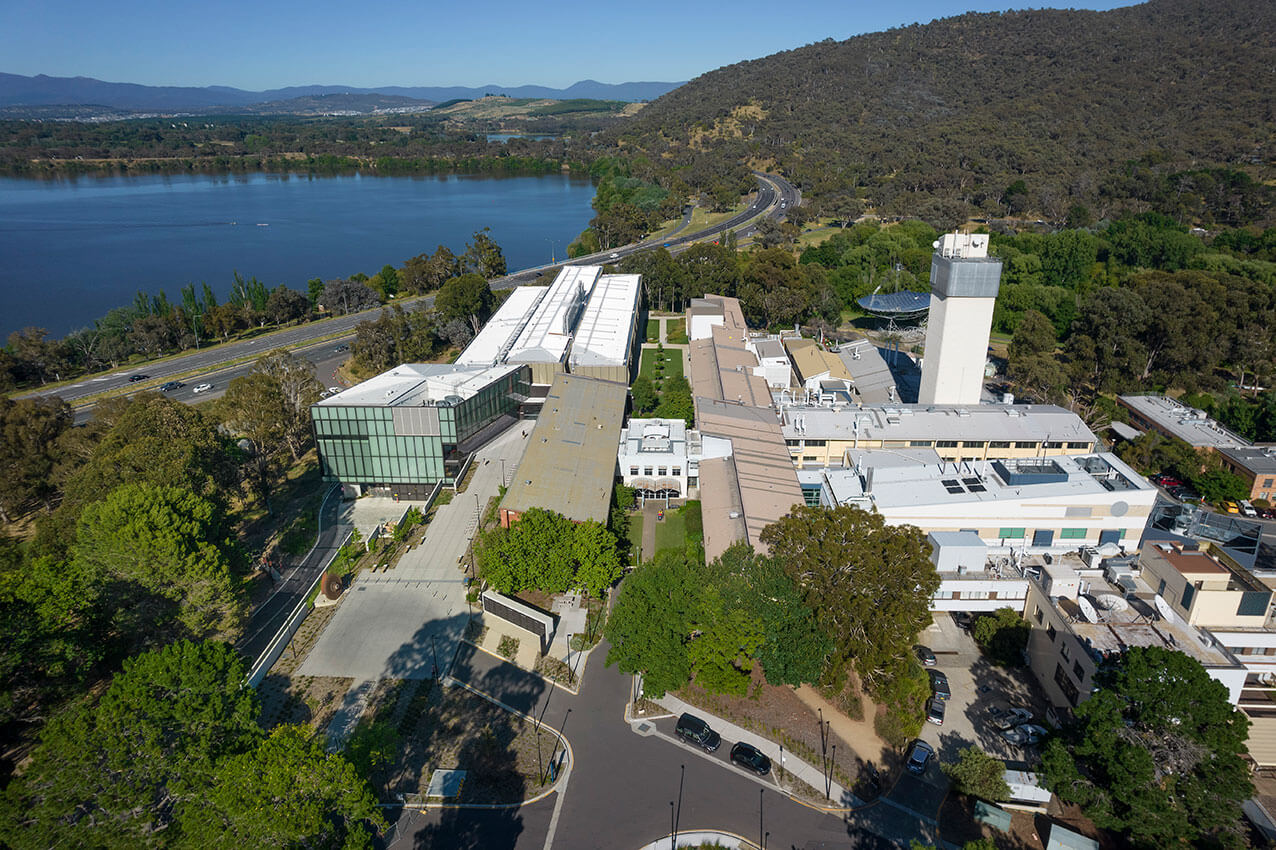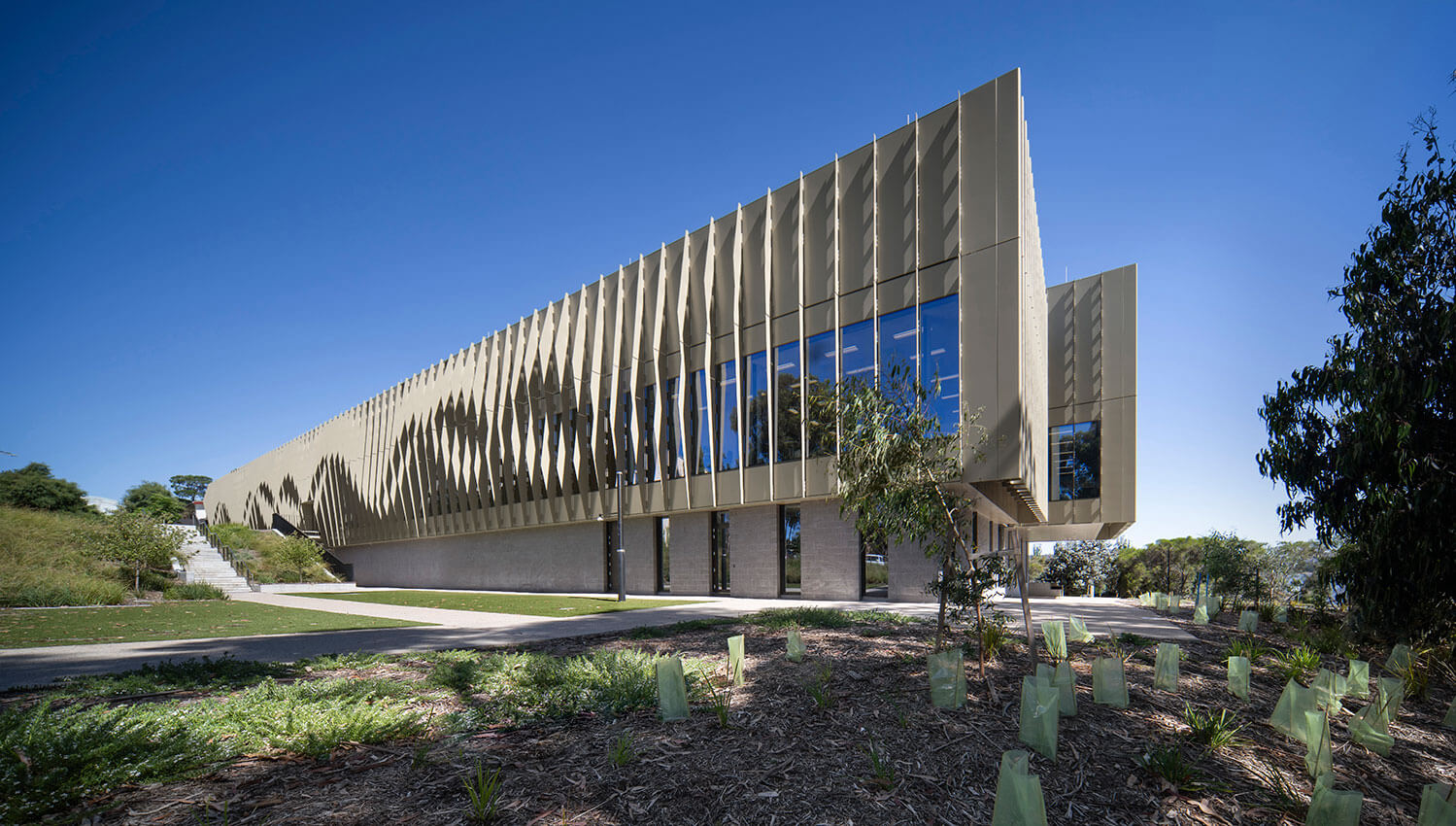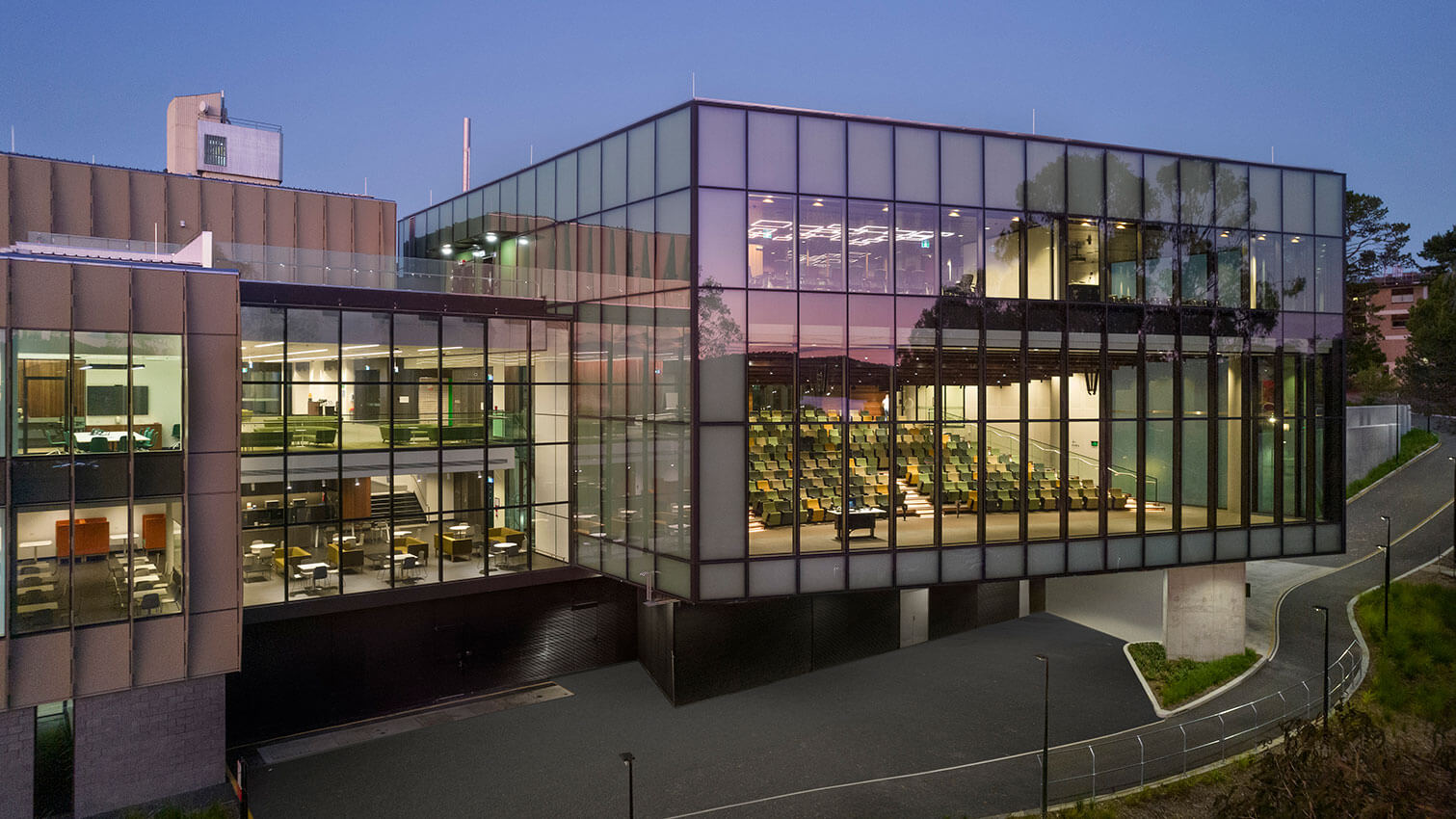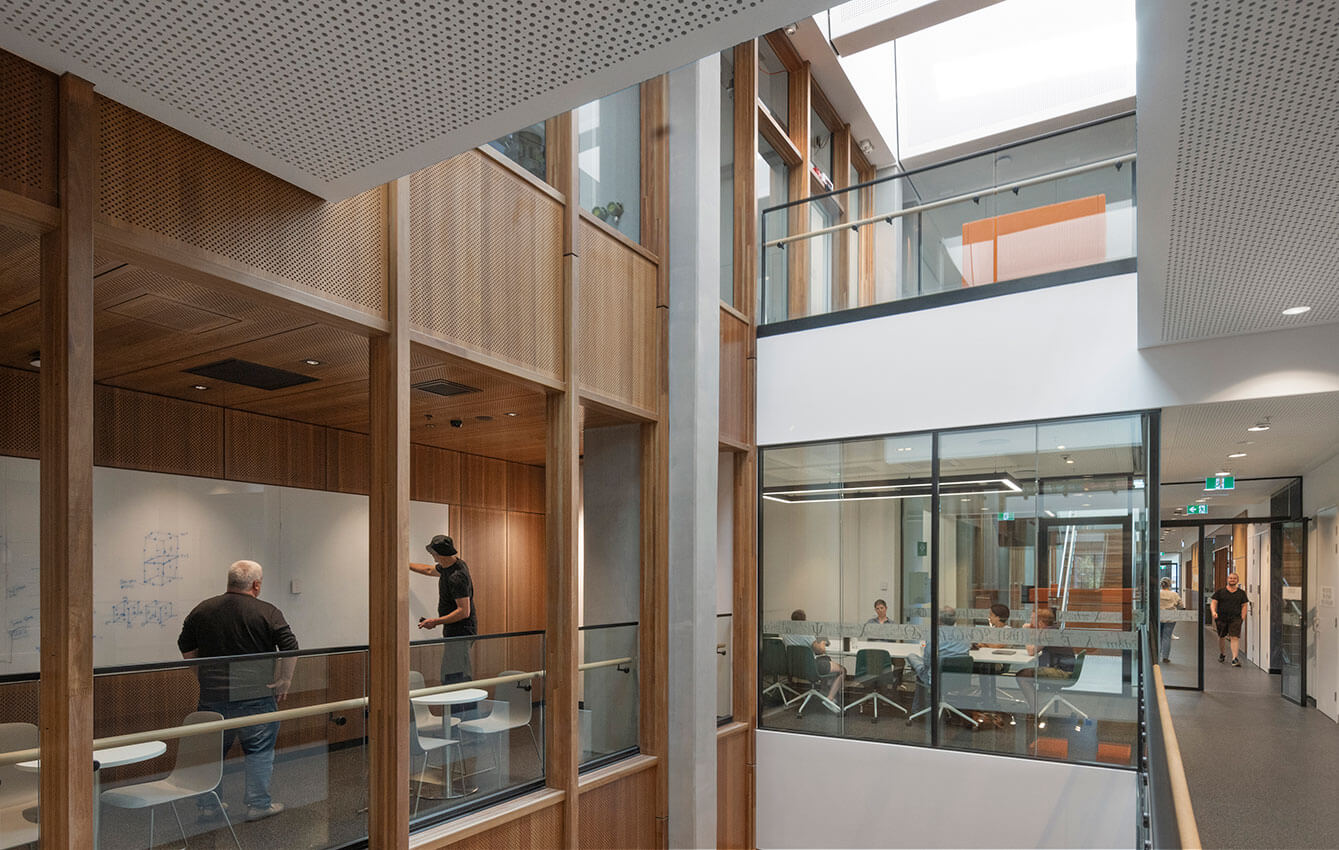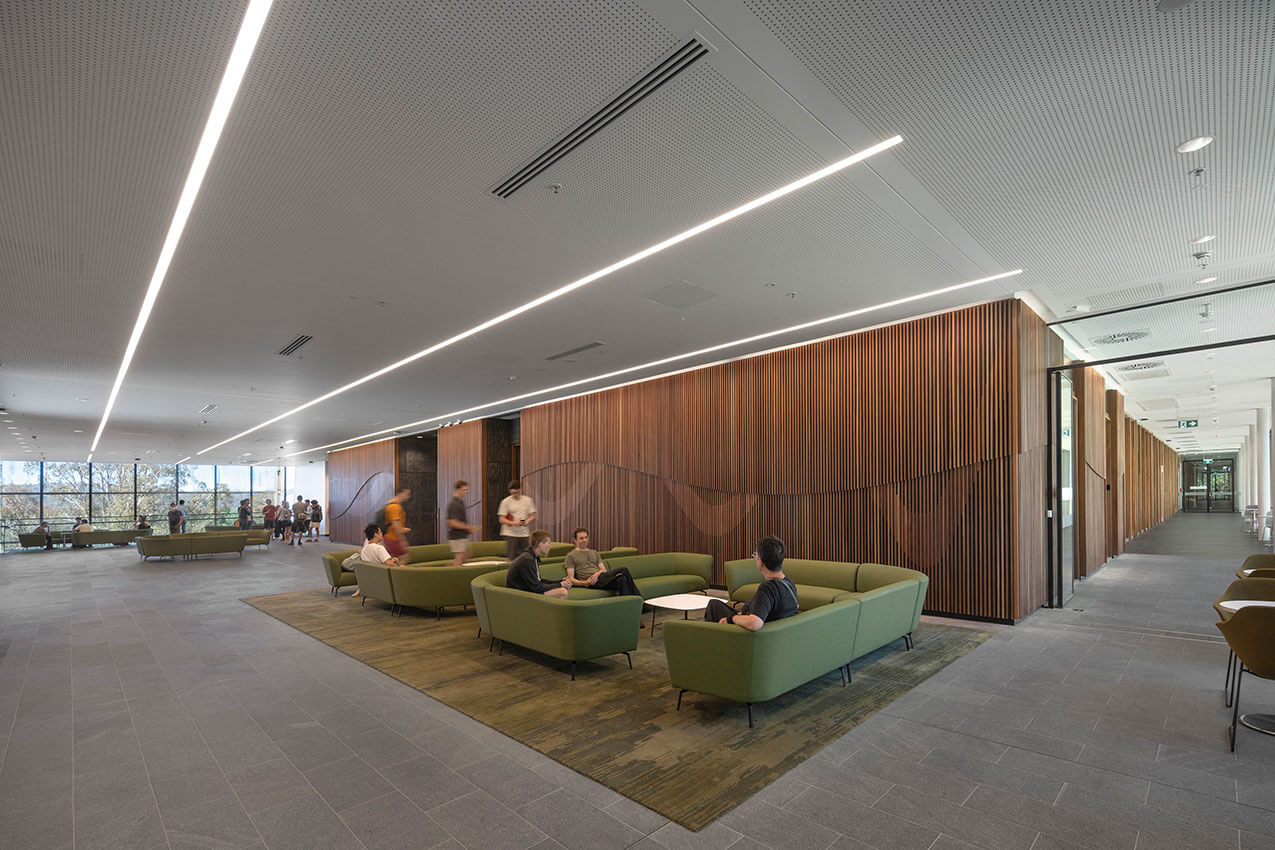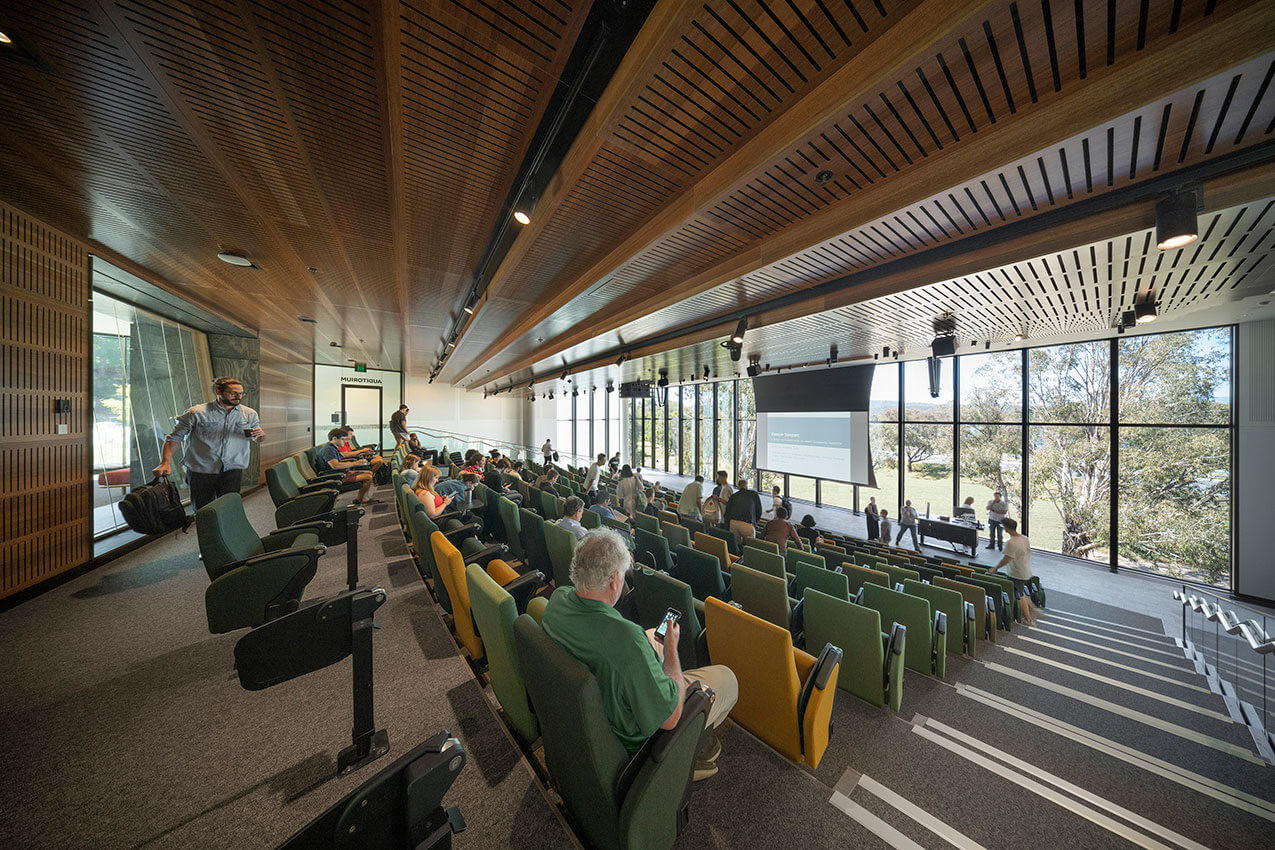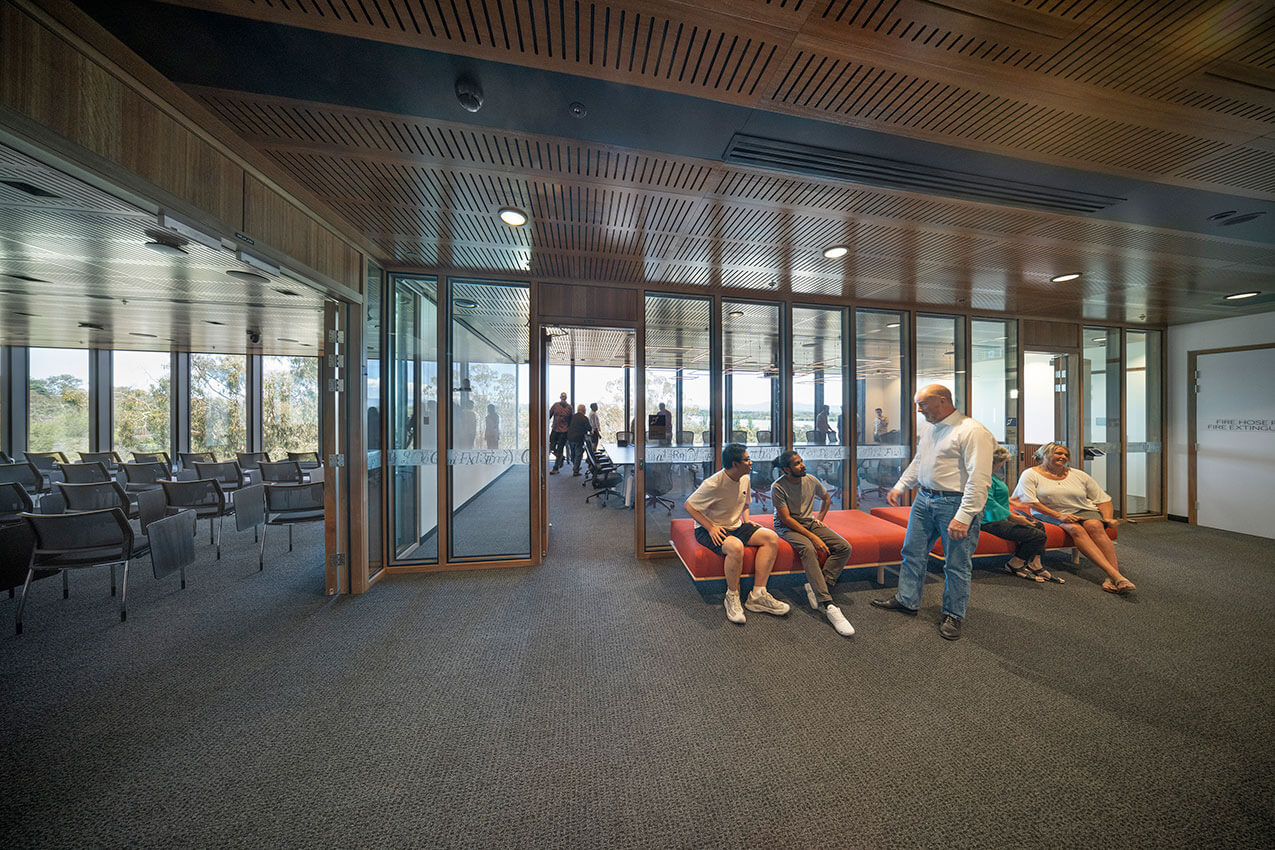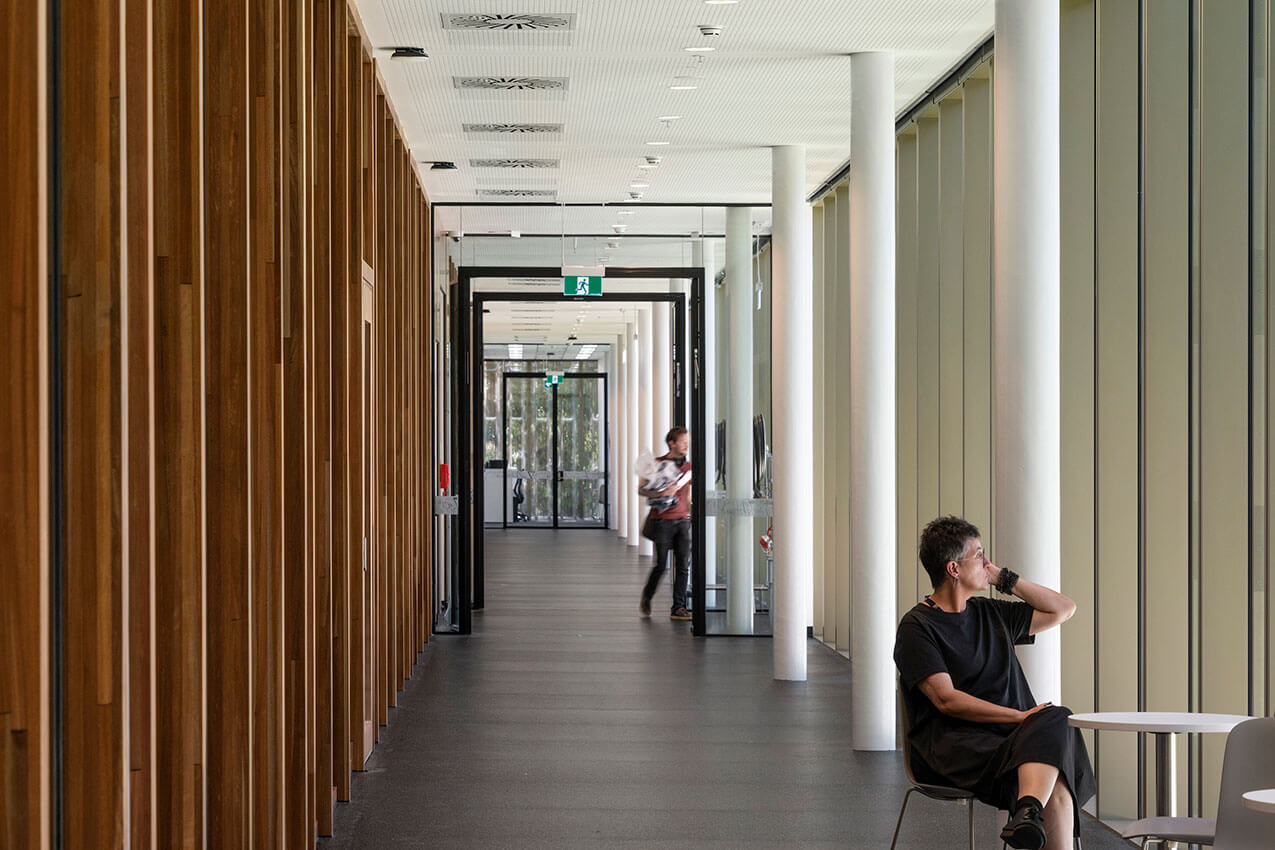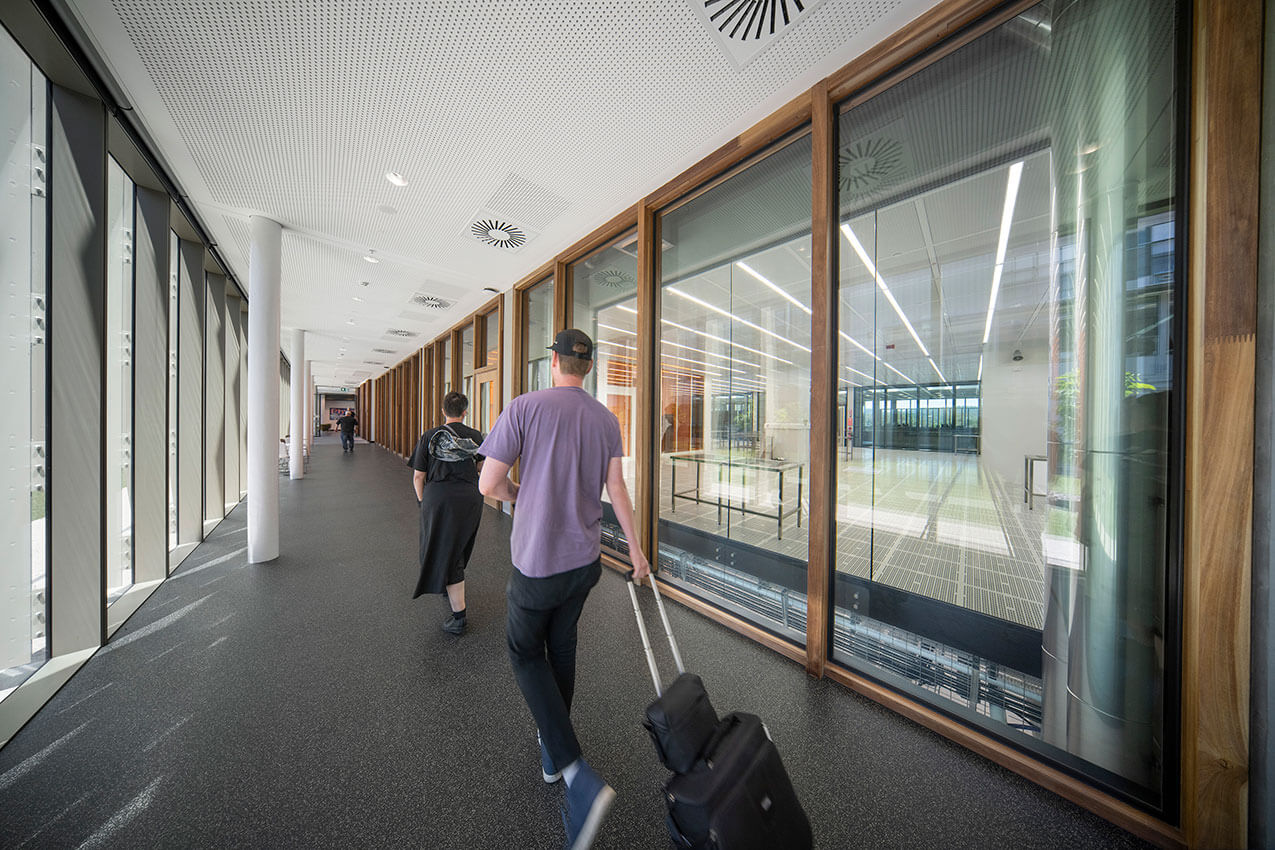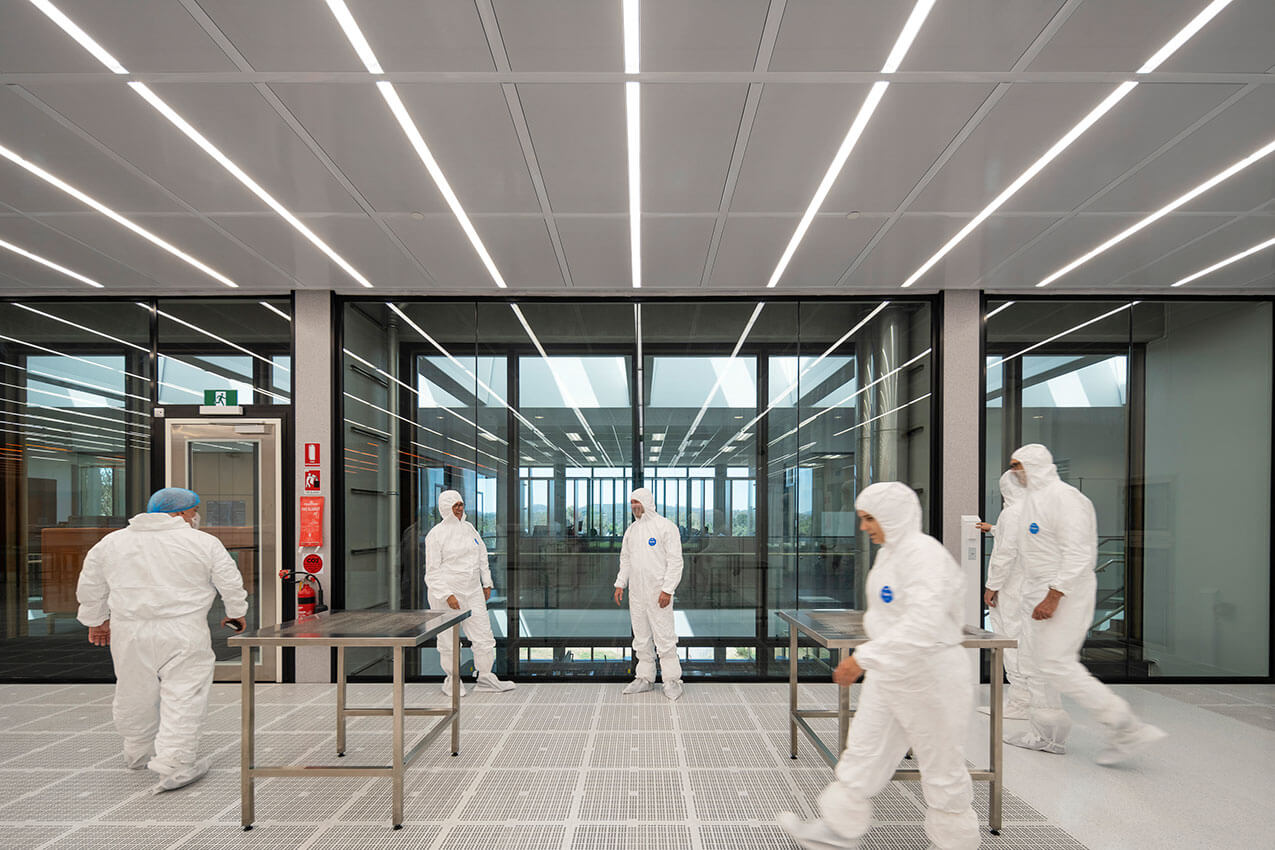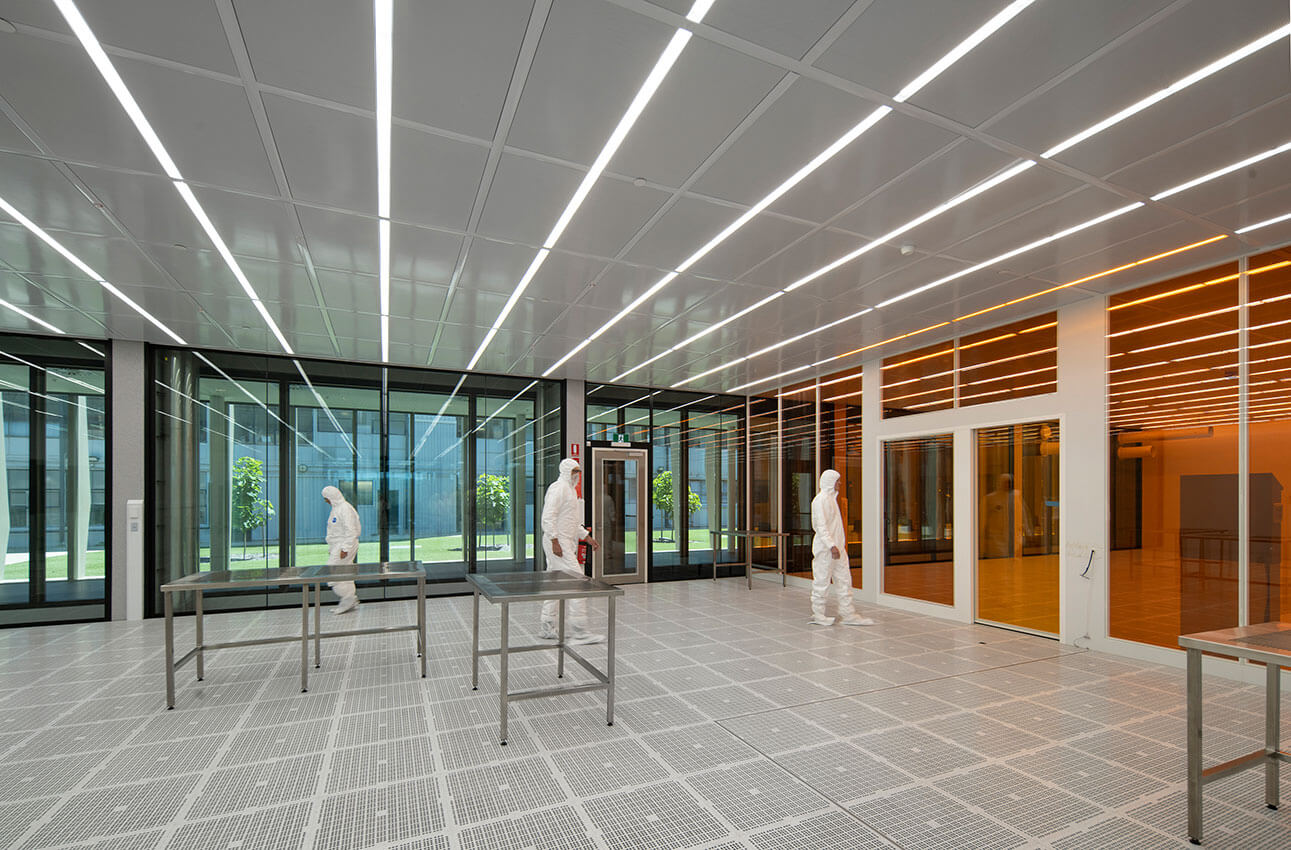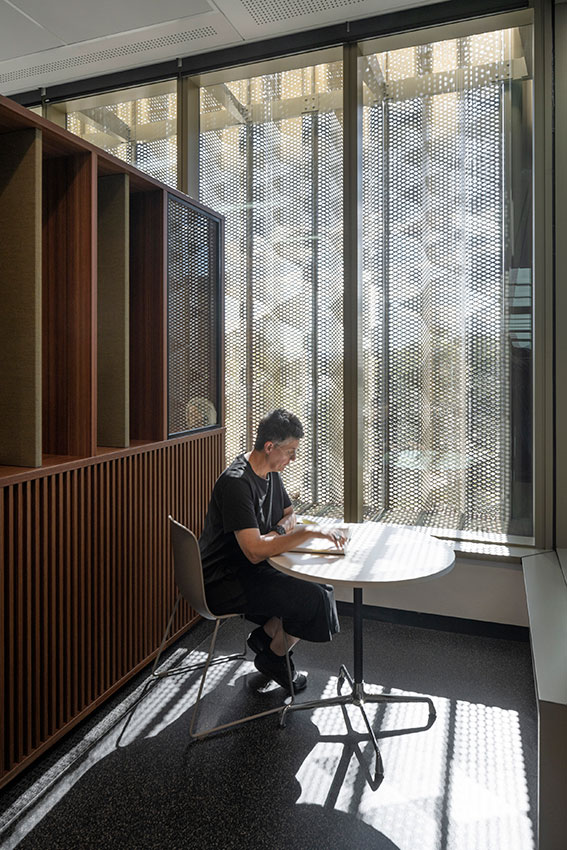Research School of Physics Stage 1 Building, Australian National University | Hassell
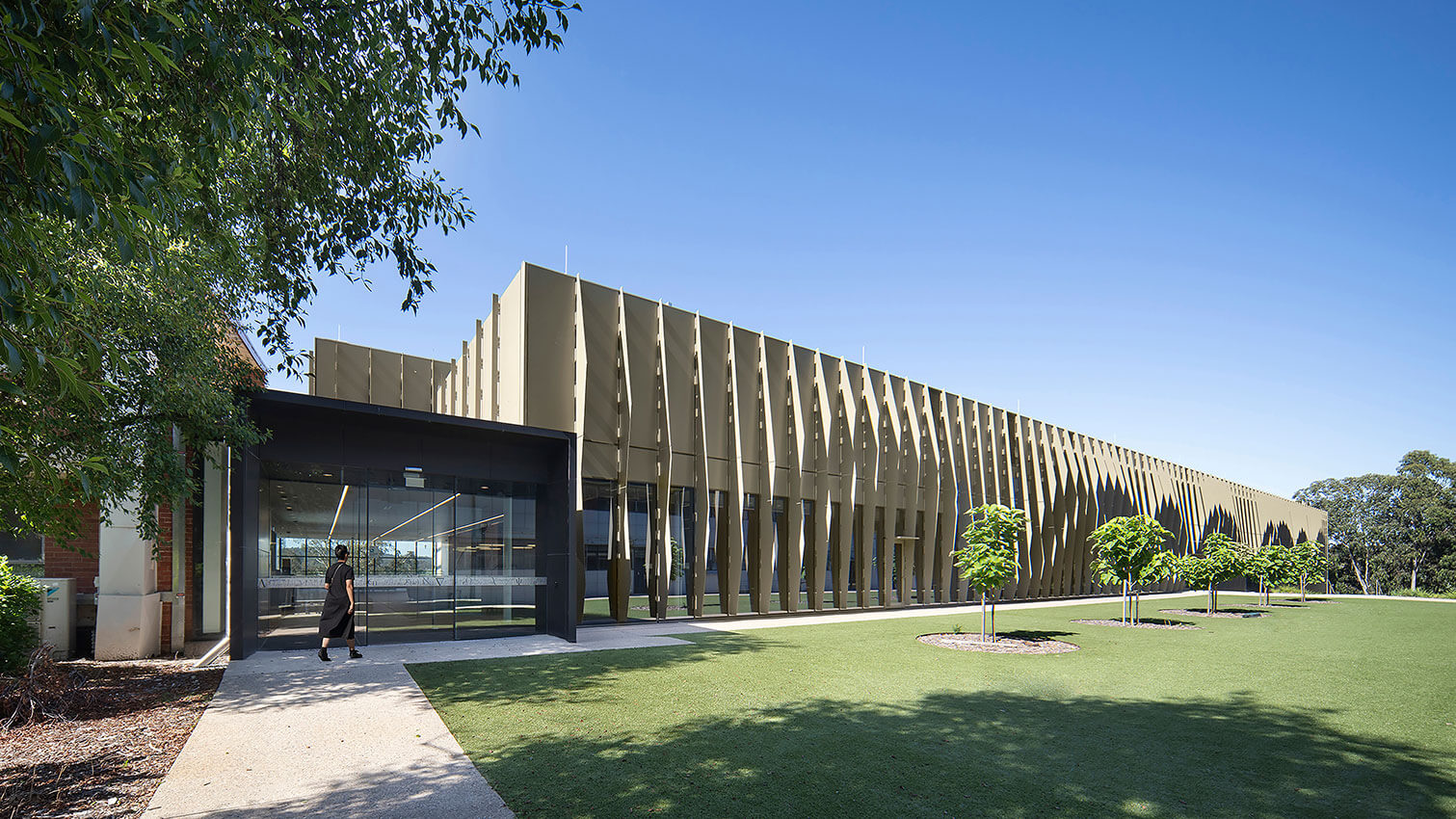
2023 National Architecture Awards Program
Research School of Physics Stage 1 Building, Australian National University | Hassell
Traditional Land Owners
Ngunnawal and Ngambri
Year
Chapter
Australian Capital Territory
Category
Interior Architecture
Builder
Photographer
Project summary
The Research School of Physics (ANU RSP) realises the critical first phase of the Physics Precinct Master Plan. A central high-tech “jewel” contains shared research platforms that enable discovery, encircled by a “necklace” of collaborative research offices for focussed intellectual endeavour, and interactive spaces for school engagement with students, research colleagues and industry.
The building articulates three “fingers” – an east-west construct designed to reduce the bulk and scale of the whole and define a northern green courtyard while optimising Lake views from within. Atrium skylights flood soft natural light deep into the plan and animate the richness and warmth of the 3-storey timber mullioned, glass and ply panelled lab “jewel”.
A lightweight veil of sun shading enhances the thermally insulated and sealed perimeter curtainwall system. Gravitational wave patterns pay homage to discoveries made by physicists within while creating a dynamic façade for fast-moving traffic to experience from Parkes Way.
2023 National Architecture Awards Accolades
2023
ACT Architecture Awards Accolades
The Robert Foster Award for Light in Architecture (ACT)
ACT Jury Presentation
Project Practice Team
Ben Wilson, Documentation Team
Emma Ludwig, Construction Team
George Hsieh, Documentation Team
Hannah Bauer, Interior Design Team
Keith Hayes, Interior Design Team
Mark Craig, Lab Design Leader
Mark Roehrs, Project and Design Principal
Matthew Todd, Design Principal
Michael Copeland, Documentation Team
Peter Hastings, Specification
Polina Radchenko, Interior Design Team
Rohan Patil, Project Leader
Roseanna Blackie, Interior Design Team
Samantha Barry, Interior Design Team
Scott Segal, Documentation Team
Troy King, Interior Design Team
Vinh Hua, Design Team
Yann Frampton, Design Team
Jeff Wen, Design Team
Lucy Corones, Interior Design Team
Sophie Kebbell, Interior Design Team
Acoustic Studio, Acoustic and vibration consultant
CBS Canberra, Building Certification & DDA
CETEC, Dangerous Goods
Hassell, Landscape Architecture
ID Labs, Signage & Wayfinding
Rider Levett Bucknall, Quantity Surveyor
Rimmington & Associates, Hydraulic & Wet Fire
Taylor Thomson Whitting (TTW), Structural, Civil & Facade
Warrington Fire, Fire Engineering
Wood PLC, Mechanical, Electrical, Comms, Security, Lab Gases, Dry Fire, Vertical Transport & ESD
Connect with Hassell
